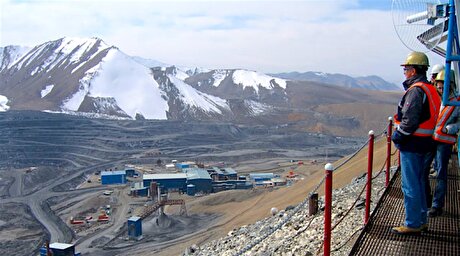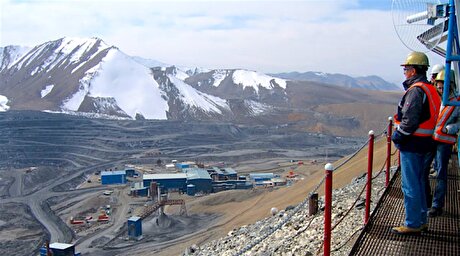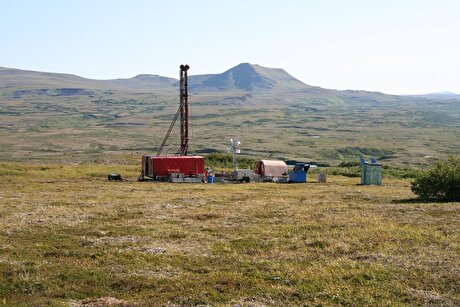
Australia’s greenhouse gas emissions fall in 2019

The fall is still above Australia's GHG emissions in 2017 when it averaged 529.5mn t of CO2e, according to the quarterly update of the national greenhouse gas inventory published by Australia's Department of Industry, Science, Energy and Resources.
The latest update showed Australia on track to miss its 2020 emissions reduction target and the 2030 target that Canberra committed to under the Paris climate agreement.
Australia has pledged to cut GHG emissions by 5pc below levels of 536.2mn t in 2000. This would mean that emissions will have to fall to 509.4mn t of CO2e by the end of 2020, or a cut of a further 23.1mn t.
A similar trend has emerged for the 2030 target of reducing GHG emissions by between 26-28pc from 2005 levels of 610.6mn t, which implies emissions have to fall to 451.8mn t by the end of 2030 or a cut of 80.7mn t from 2019 levels. This equates to reductions of an average of 7.3mn t/yr of CO2e over the period from the end of 2019 to the end of 2030.
The fall in 2019 emissions was due to a 2.9pc slide in GHG emissions from electricity generation to 175.4mn t of CO2e in 2019 from 180.7mn t at the end of 2018. The fall in power emissions was because of a further rise in the share of electricity generated from renewable sources and a drop in coal-fired electricity.
The report also has preliminary estimates for GHG emissions from the National Electricity Market (NEM), which covers east Australia and accounts for around 85pc of emissions of Australia's total emissions from the national electricity sector.
GHG emissions dropped to 36mn t of CO2e during January-March from 38.1mn t of CO2e in the same period a year earlier and below the 36.2mn t of CO2e for October-December. GHG emissions from the NEM in the 12 months to 31 March fell to 146.3mn t from 152.6mn t in the 12 months to March 2019.
Preliminary estimates from the NEM for April this year indicate some further, modest falls in emissions partly because of Covid-19 restrictions, the report said. Emissions in April 2020 are estimated to be 6.7pc below levels recorded for April 2019, reflecting lower generation by gas and black coal-fired power generation, which were down by 8.2pc and 12.7pc respectively, it said. The small reduction in demand suggests the impact of Covid-19-related restrictions up to the end of April 2020 have not been significant for the electricity sector, the report said.
The drop in GHG emissions in 2019 were partially offset by a 2.5pc rise in fugitive emissions to 56.7mn t of CO2e at the end of 2019 from 55.3mn t a year earlier. The rise in fugitive emissions was driven by a 17.9pc increase in natural gas production last year, which was partially offset by a 4.2pc fall in underground coal production.
The fall in total GHG emissions in 2019 was also because of drought conditions that existed in Australia for much of last year, which in turn led to reduced livestock populations, as well as lower use of fertilisers. These trends contributed to a 5.8pc fall in emissions from the agriculture sector.


Trump weighs using $2 billion in CHIPS Act funding for critical minerals

Codelco cuts 2025 copper forecast after El Teniente mine collapse

Electra converts debt, launches $30M raise to jumpstart stalled cobalt refinery

Barrick’s Reko Diq in line for $410M ADB backing

Abcourt readies Sleeping Giant mill to pour first gold since 2014

Nevada army depot to serve as base for first US strategic minerals stockpile

SQM boosts lithium supply plans as prices flick higher

Viridis unveils 200Mt initial reserve for Brazil rare earth project

Tailings could meet much of US critical mineral demand – study

Kyrgyzstan kicks off underground gold mining at Kumtor

Kyrgyzstan kicks off underground gold mining at Kumtor

KoBold Metals granted lithium exploration rights in Congo

Freeport Indonesia to wrap up Gresik plant repairs by early September

Energy Fuels soars on Vulcan Elements partnership

Northern Dynasty sticks to proposal in battle to lift Pebble mine veto

Giustra-backed mining firm teams up with informal miners in Colombia

Critical Metals signs agreement to supply rare earth to US government-funded facility

China extends rare earth controls to imported material

Galan Lithium proceeds with $13M financing for Argentina project

Kyrgyzstan kicks off underground gold mining at Kumtor

Freeport Indonesia to wrap up Gresik plant repairs by early September

Energy Fuels soars on Vulcan Elements partnership

Northern Dynasty sticks to proposal in battle to lift Pebble mine veto

Giustra-backed mining firm teams up with informal miners in Colombia

Critical Metals signs agreement to supply rare earth to US government-funded facility

China extends rare earth controls to imported material

Galan Lithium proceeds with $13M financing for Argentina project

Silver price touches $39 as market weighs rate cut outlook

















